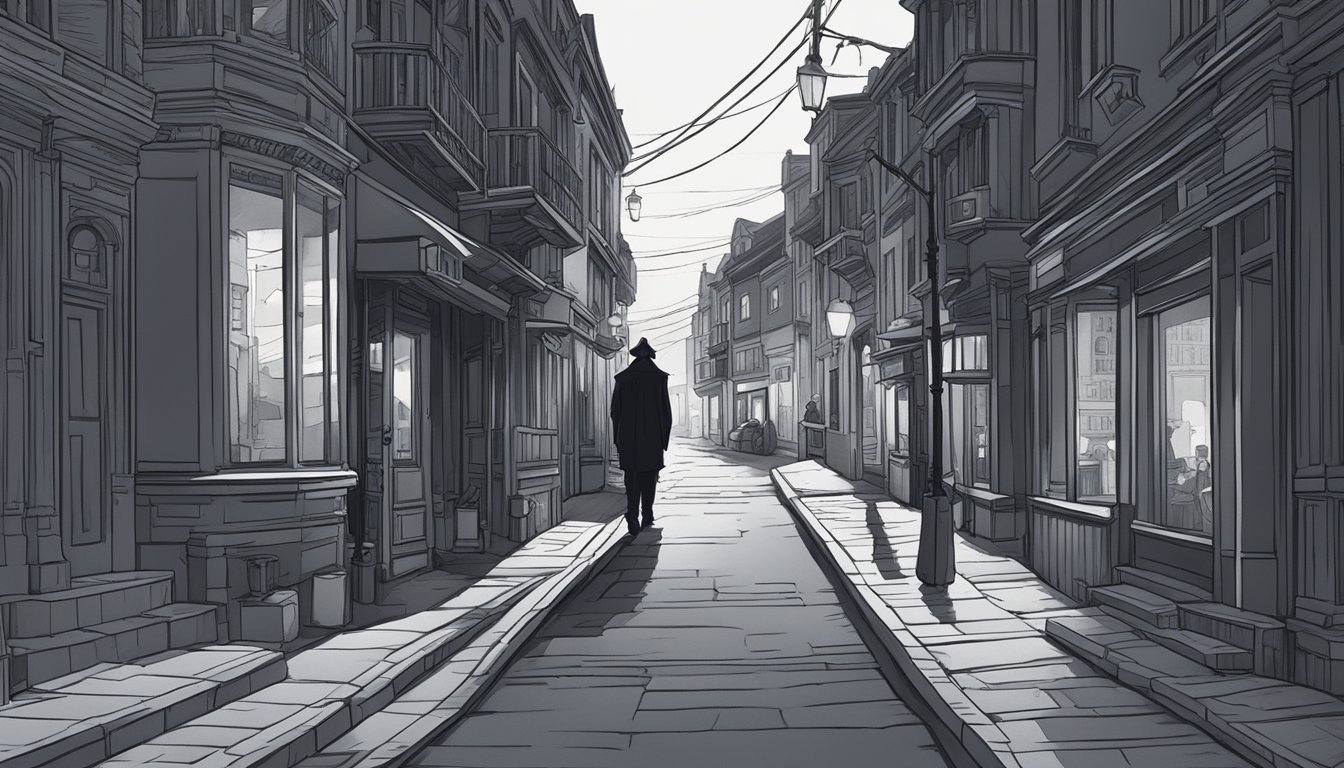Riverside Ripper: William Lester Suff's Deadly Street Patrols
A Serial Killer's Reign of Terror
William Lester Suff terrorized Riverside County, California in the late 1980s and early 1990s. Known as the "Riverside Prostitute Killer," Suff targeted vulnerable women working the streets. He murdered at least 12 sex workers over a three-year period, leaving a trail of brutality that shocked the community.
Suff's crimes were particularly heinous, involving rape, torture, and mutilation. His victims were found in various locations across Riverside County, often with distinctive injuries that became his gruesome signature. The killer's ability to evade capture for years heightened public fear and frustration.
The hunt for the Riverside Ripper intensified as the body count rose. Law enforcement faced challenges in gathering evidence and identifying suspects in a case involving marginalized victims. Suff's eventual arrest in 1992 brought relief to the region, but also raised questions about how he managed to operate undetected for so long.
Profile of William Lester Suff
William Lester Suff, also known as the Riverside Prostitute Killer and Lake Elsinore Killer, was a notorious American serial killer who operated in Southern California. His criminal history and background provide insight into the development of a dangerous predator.
Early Life and Background
Born on August 20, 1950, William Lester Suff spent his formative years in Texas. Little is known about his childhood or family life. As an adult, Suff moved to California where he eventually found work in a computer repair shop.
His unassuming demeanor allowed him to blend into society, masking his violent tendencies. Suff's ability to maintain a seemingly normal life while carrying out heinous crimes made him particularly dangerous.
Prior Convictions and Parole
Suff's criminal record began before his serial killing spree. In 1974, he was convicted of beating his two-month-old daughter to death in Texas. This horrific act resulted in a 70-year prison sentence.
Despite the severity of his crime, Suff was paroled after serving only 10 years. He relocated to Lake Elsinore, California, where he would later begin his murderous rampage. This early release proved catastrophic, as Suff went on to claim numerous victims in Riverside County.
Timeline of Crimes
William Lester Suff's murderous rampage spanned several years, leaving a trail of victims across Riverside County. His crimes followed a pattern, targeting vulnerable women and employing similar methods of killing.
Early Victims and M.O.
Suff's known killing spree began in 1989. His first confirmed victim was Rhonda Jetmore, who survived an attack in January. By June, Suff claimed his first fatality: Kimberly Lyttle, 28.
His modus operandi involved picking up women, often sex workers, in his van. He would strangle or stab them, then dump their bodies in orange groves or remote areas.
In 1990, the body count rose. Victims included Christina Leal, 23, and Darla Ferguson, 23. Suff's violence escalated, with some bodies showing signs of torture.
Lake Elsinore Discovery
A grim discovery in Lake Elsinore in December 1991 marked a turning point. The body of Kathleen Milne, 42, was found near the lake.
This crime scene provided crucial evidence. Tire tracks and fibers linked to Suff's van were recovered.
The Lake Elsinore killing prompted increased police vigilance. Patrols were stepped up in areas known for sex work.
In January 1992, an alert officer noticed Suff's van. This led to his arrest, ending his three-year reign of terror.
Victims and their Stories
William Lester Suff's murder spree devastated families and communities across Riverside County. His victims were predominantly women working as prostitutes, highlighting the vulnerability of marginalized groups.
Profiles and Memories
Cathy Ann Small, 19, was one of Suff's earliest known victims. Found stabbed to death in 1986, her case went unsolved for decades until DNA evidence linked Suff to the crime. Michelle Yvette Gutierrez, 23, and Charlotte Jean Palmer, 24, were among the women killed during his main spree from 1989 to 1991.
Many victims were young mothers, leaving behind grieving families and children. Linda Ann Ortega, 35, was survived by her teenage daughter. Eleanore Ojeda Casares, 39, had three children.
Suff targeted women working the streets of Riverside and Lake Elsinore. Most were strangled or stabbed, their bodies left in orange groves or empty lots.
Impact on Families
The murders shattered lives beyond the immediate victims. Children were left without mothers, parents buried daughters, and communities lived in fear.
Families endured years of uncertainty as the killer remained at large. Some victims' remains went unidentified for extended periods, prolonging the anguish.
The loss of loved ones to such violence caused lasting trauma. Many families struggled with grief, anger, and a sense of injustice. Support groups formed to help relatives cope with their shared experiences.
Suff's crimes exposed societal neglect of vulnerable populations. Advocacy efforts emerged to better protect sex workers and address root causes pushing women into high-risk situations.
Investigation and Arrest
Advances in forensic technology and persistent detective work led to William Lester Suff's capture. DNA evidence played a crucial role in linking him to multiple victims.
Crime Lab Breakthroughs
Investigators collected DNA samples from crime scenes, preserving crucial evidence. Forensic experts meticulously analyzed fibers, hair, and other physical evidence found on victims' bodies.
Law enforcement agencies collaborated, sharing information across jurisdictions to identify patterns in the killings. Detectives interviewed witnesses and compiled detailed victim profiles.
The breakthrough came when crime lab technicians matched DNA from multiple crime scenes, confirming a single perpetrator.
The Role of DNA Analysis
DNA analysis proved pivotal in building the case against Suff. Technicians extracted genetic material from evidence collected at various murder sites.
The DNA profiles were run through databases, eventually leading to a match with Suff's genetic markers. This scientific evidence provided a solid link between the killer and his victims.
On January 9, 1992, police arrested Suff during a routine traffic stop. Officers found incriminating items in his vehicle, including a bloody knife and clothing belonging to victims.
Trial and Conviction
William Lester Suff faced justice for his heinous crimes in a high-profile trial. The proceedings revealed disturbing details of his murders and led to a decisive verdict.
Legal Proceedings
Suff's trial began in 1995 in Riverside County, California. Prosecutors presented overwhelming evidence linking him to 12 murders of sex workers between 1989 and 1991. DNA from sexual assault kits played a crucial role in connecting Suff to the victims. Witnesses testified about Suff's suspicious behavior and incriminating statements.
The defense attempted to cast doubt on the forensic evidence and argued Suff had mental health issues. However, their efforts were ultimately unsuccessful in swaying the jury.
Sentencing
After deliberations, the jury found William Lester Suff guilty on all 12 counts of first-degree murder. The judge sentenced him to death in 1995, condemning Suff to California's death row at San Quentin State Prison.
In addition to the death sentence, Suff received multiple life terms without the possibility of parole. The severity of the punishment reflected the brutality of his crimes and the pain inflicted on victims' families. Despite being on death row for decades, Suff remains alive due to California's suspension of executions.
Impact on the Community
William Lester Suff's killing spree left a deep scar on Riverside County. His actions sparked fear and outrage, prompting community-wide efforts to address safety concerns and support victims.
Public Sentiment and Safety Concerns
Suff's murders created widespread panic in Riverside County. Residents, especially women involved in sex work, lived in constant fear. Many altered their routines and avoided going out alone at night.
Local businesses saw a decline in customers as people stayed home. Law enforcement faced intense pressure to catch the killer. The community's trust in public safety was severely shaken.
Media coverage of the murders further heightened anxiety. Some criticized the initial lack of attention to the case due to the victims' backgrounds.
Community Advocacy and Support for Victims
In response to the killings, several community organizations emerged. These groups focused on supporting sex workers and advocating for their safety.
One notable initiative was the "Protective Big Sister" program. It paired experienced sex workers with newcomers to promote safety practices.
Victim support groups formed to help families cope with their losses. These organizations provided counseling services and financial assistance.
Local churches and charities increased outreach efforts. They offered resources for those seeking to leave sex work or overcome addiction.
Kathryn Barger, a county supervisor, championed policy changes to improve safety for vulnerable populations. Her efforts led to increased funding for community policing and social services.
Aftermath and Legacy
William Lester Suff's brutal crimes left an indelible mark on Riverside County and beyond. His case continues to influence law enforcement practices and criminal investigations.
Cultural and Legal Influence
Suff's crimes sparked changes in how law enforcement approached serial killings. Police departments improved their communication and data-sharing practices to better track patterns across jurisdictions. The case highlighted the importance of preserving evidence, as advances in DNA technology later helped link Suff to additional victims.
The media coverage of Suff's trial raised public awareness about the vulnerability of sex workers and marginalized communities. This led to increased support for outreach programs and safety measures for at-risk individuals.
Suff's sentencing to death row at San Quentin State Prison reignited debates about capital punishment in California. His case is often cited in discussions about the death penalty's effectiveness as a deterrent for violent crimes.
Continuing Developments in the Case
Even decades after Suff's conviction, new developments continue to emerge. In 2024, DNA evidence linked him to the 1986 murder of 19-year-old Cathy Small in South Pasadena. Homicide detectives used advanced techniques to analyze DNA found on the victim's clothing and nightgown.
This breakthrough demonstrates the enduring impact of cold case investigations. It also provides closure for victims' families who have waited years for answers.
Crime lab advancements have allowed investigators to reexamine evidence from unsolved cases. This has led to speculation that Suff may be responsible for additional murders, potentially even outside of California.


